Dabuka Travel Visions

Topic Focus
Western Desert from Hurghada
4 of the Best



Topic Focus
Western Desert from Hurghada
4 of the Best

First and foremost, we wish you all a fulfilling, joyful, vibrant, and healthy 2025 and hope the year has started well for you.
To make this year even more colorful, we’ve again compiled a bouquet of various journeys, ideas, and information in this issue
Recently, I came across a question on Facebook: What is the best way to escape reality besides alcohol and drugs?
The answers were diverse, but unsurprisingly, the idea of traveling came up repeatedly My immediate thought was—shouldn’t a trip be less of an escape from current life realities and more of a refreshing break that allows you to return home reenergized? What do you think?
Our offerings aim precisely for that— adventures like swaying on the back of a camel through the White Desert, the fascination of a river cruise in Tanzania, or the absolute bliss of sailing on Lake Nasser
I know it can often be hard to return to everyday life after a wonderful vacation A popular remedy is immediately planning the next trip ��.

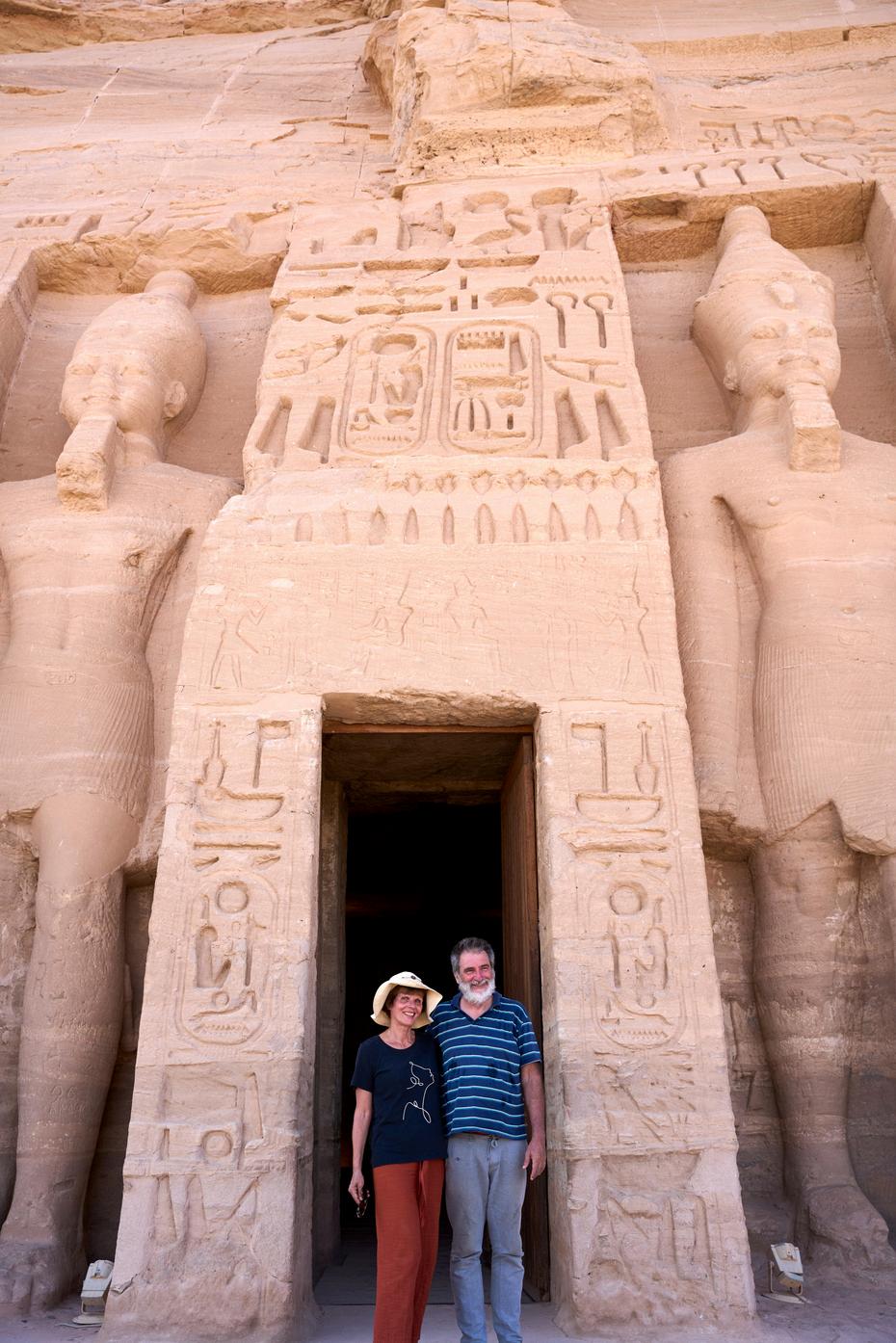
But every beautiful memory, every successful photo can serve as a small escape from the daily grind In this way, travel and everyday life weave together into a rich tapestry that refines over time
Of course, it’s also about perspective Do I approach things positively and proactively, or with worry, melancholy, or even fear?
My son is a wonderful example of the "glass half full" mindset. Recently, he had to fly to India for a rather unpleasant business meeting. Wanting to save money, he booked the cheapest possible flights, which meant multiple airline changes, exiting and re-entering different countries, dealing with unfriendly customs officers, carrying his luggage for long stretches because no taxis were in sight, and enduring two sleepless nights.
However, in his retelling, these challenges were not the focus Instead, he emphasized the wonderful people he met along the way, who invited him for meals and showed him around their city He arrived at his final destination exhausted but in good spirits and successfully completed his meeting
And because the unplanned often writes the best stories, he is now spontaneously traveling through India, enjoying the country and its people His steadfast belief: “Something good always happens to me in the end ”
So, a complete escape from everyday life isn’t necessary—just the ability to occasionally change your perspective We’re happy to take you along on a journey into the wide world—and ensure you return home safely
"Happiness is not by chance but by choice " — Jim Rohn
Warm regards
Dorothee and Tarek

Stories beside the Mainstream - I have a boat in Africa
Outstanding Destinations“Eastern Desert” of Egypt
III. TOPIC FOCUS: HURGHADA TO THE WESTERN DESERT
Hassan Fathy: Egypt’s Visionary Architect and Champion of the Poor Western Desert from Hurghda (Diary) V.



We’re thrilled to see the world through the eyes of our travelers! Share your favorite moments and memories with #DabukaTravelVisions on social media for a chance to be featured on our page and to enter our $100 gift voucher giveaway.
Every photo shared brings inspiration to our travel community, and selected winning photos will also have the honor of being highlighted in our upcoming issue, putting your travel story on full display. ��✨
Don’t miss your chance to inspire others and celebrate your journey!
Submit by:
April 15, 2025, and let’s keep exploring together.
There is no winner in this issue.
For all existing Dabuka clients please join our EXCLUSIVE Facebook group “Dabuka insiders."


We love to hear about your amazing experiences with us and all your wonderful feedback is most welcome!
UNIQUE WESERN DESERT TOUR FROM HURGHADA BY BIRGIT FROM GERMANY
Yes, absolutely have we been intoxicated by this amazing journey through the Western desert and its beauty
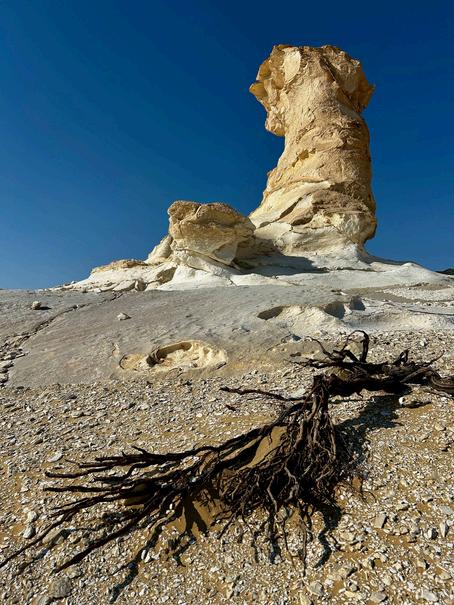
I couldn’t describe our feelings more suitable than with the lyrics of this song by Sting and Cheb Mami.
“DESERT ROSE“
Close your eyes and listen to this touching song!
I dream of rain

I dream of gardens in the desert sand
I wake in vain
I dream of love as time runs through my hand
I dream of fire
Those dreams are tied to a horse that will never tire
And in the flames
Her shadows play in the shapes of a man’s desire
This desert rose

Each of her veils, a secret promise
This desert flower
No sweet perfume ever tortured me more than this

And as she turns
This way she moves in the logic of all my dreams
This fire burns
I realize that nothing’s as it seems
I dream of rain
I dream of gardens in the desert sand
I wake in vain
I dream of love as time runs through my hand
I dream of rain
I lift my gaze to empty skies above
I close my eyes
This rare perfume is the sweet intoxication of her love

Sting was inspired to write it after a trip to Egypt where he witnessed the blending of Western and Middle Eastern cultures. The song describes the passion and intrigue that comes with falling in love with someone who is different from you. It’s a story of a deep connection between two people that transcends borders and cultural differences.
He saw firsthand how their music enchanted and united people from different backgrounds and beliefs.
Exactly this clashing with two different cultures and ways of living, sharing everything (e.g. food), supporting each other (e.g. digging the car out of the sand), learning from each other (e g while cooking), trusting each other (e.g. while navigating) has made this journey -besides the so varied, often surreal and unbelievably beautiful landscape-extraordinary.
I’ve found two desert roses that I placed in the lovely garden of El Dohous in Dakhla thanking Tarek and
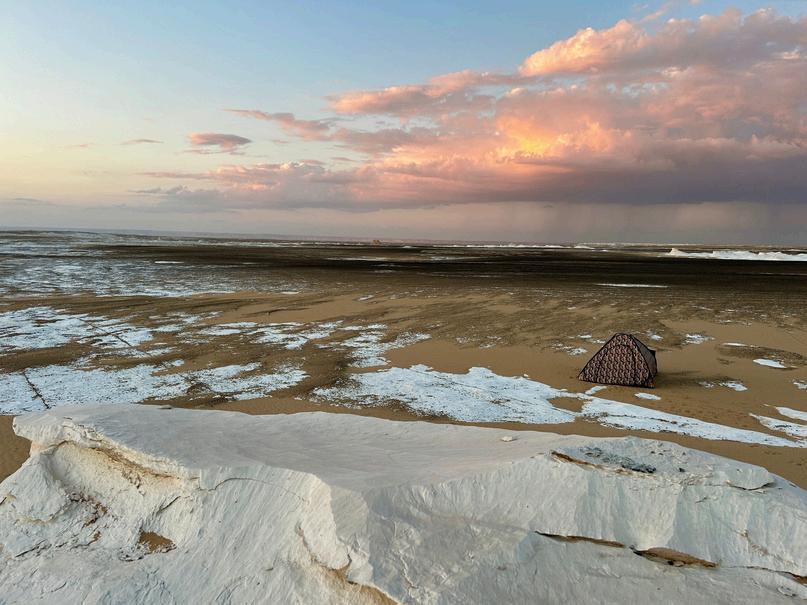
Dorothee for organizing this adventurous journey and Yousif and his whole Bedouin family for their generous and friendly treatment, in other words: their proverbial Bedouin hospitality.
If anybody wants to fall in love with the desert, go on this trip. It’s worth each of its 2,022 kilometres.


By Dorothee Rieche
Experience the Magic of the Abu Simbel Sun Festival!
In ancient Egypt, the calendar was filled with vibrant festivals featuring grand processions through
cities and along the sacred Nile. Many of these celebrations were tied to key agricultural events or honored powerful gods, kings, and queens. Remarkably, some of these traditions have endured the test of time and are still observed today. Among the most famous is the Abu Simbel Sun Festival, a breathtaking fusion of human ingenuity and natural wonder that takes place each February and October.
What is the Abu Simbel Sun Festival?
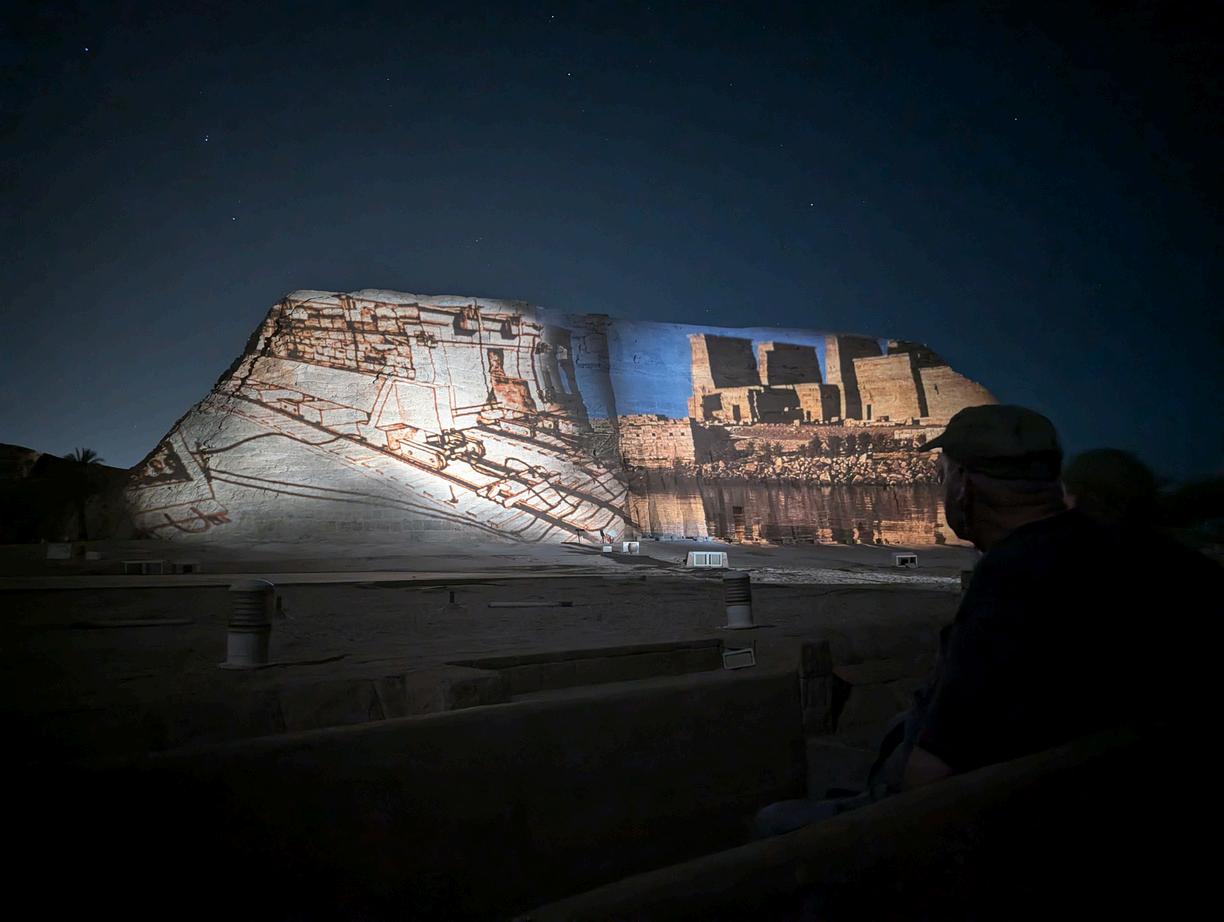
The Abu Simbel Sun Festival is a biannual event celebrated at the aweinspiring temple of Ramses II in southern Egypt. On two specific days each year, the temple’s inner sanctum is bathed in sunlight as the sun aligns perfectly with the structure. This extraordinary phenomenon illuminates the statues of Ra, the sun god, and Amun, the king of the gods, while leaving Ptah, the god of darkness, in
shadow—a testament to the temple’s brilliant design. This tradition has been ongoing for over 3,200 years.
When Does the Festival Happen?
The Sun Festival takes place twice a year, on February 22nd and October 22nd. Originally, the event occurred a day earlier, on February 21st and October 21st, marking Ramses II’s ascension to the throne and his
birthday, respectively. The temple was designed so that the sun’s rays would illuminate the inner sanctuary only on these two dates, leaving it in darkness the rest of the year.
In the 1960s, the construction of the Aswan Dam threatened to submerge Abu Simbel. To preserve this iconic site, the temple was relocated 200 meters from the rising waters in a

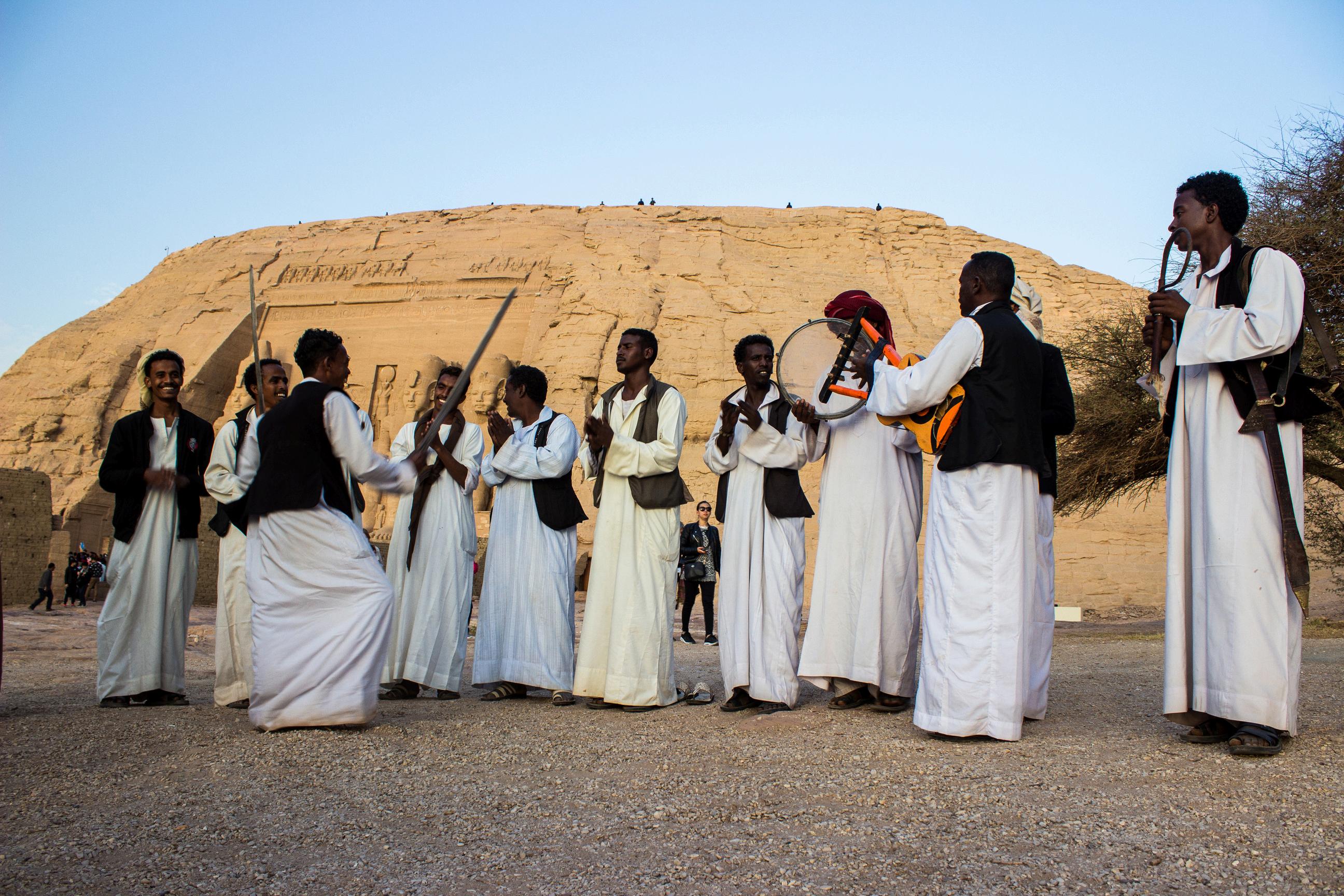
massive engineering feat that cost millions. This move shifted the Sun Festival’s alignment by one day, but the spectacle remains as captivating as ever.
Before dawn, crowds of locals, Egyptians from across the country, and international travelers gather outside the temple to witness the sunrise. As the first rays of sunlight pierce through the darkness, they illuminate the sacred inner chamber.
Visitors pass through the temple’s grand entrance, flanked by colossal statues, and journey through the intricately decorated Hypostyle Hall and pillared chambers to reach the sanctuary. There, the four seated statues await the sun’s arrival, as the crowd stands in awe.
Following the morning’s awe-inspiring event, the festivities move outdoors.
Traditional Nubian music and dance performances fill the air, while food stalls offer fresh koshari, Egypt’s beloved national dish made of rice, pasta, lentils, and spiced tomato sauce. The festival continues throughout the day in a lively, celebratory atmosphere.
Save the Date: 22 02 2025

"One should celebrate the occasions as they come."



Sometimes, life opens a door for us for a limited time—one we can choose to walk through or not. The fascinating thing about this is that we don’t know what lies behind the door. Will it be something good or something challenging? Once you’ve stepped through, there’s no going back entirely...
Recently, I walked through such a door, transitioning from my role as a teacher at a German international school to that of a businesswoman. I am now the proud owner of a safari boat on Lake Nasser and am only beginning to learn what this truly entails.
I have a boat in Africa; it’s called the “Dabuka Blue”. Its delicate design, vibrant colors, soft beds, cozy chairs, and inviting spaces quickly became my second home and my “happy place.”
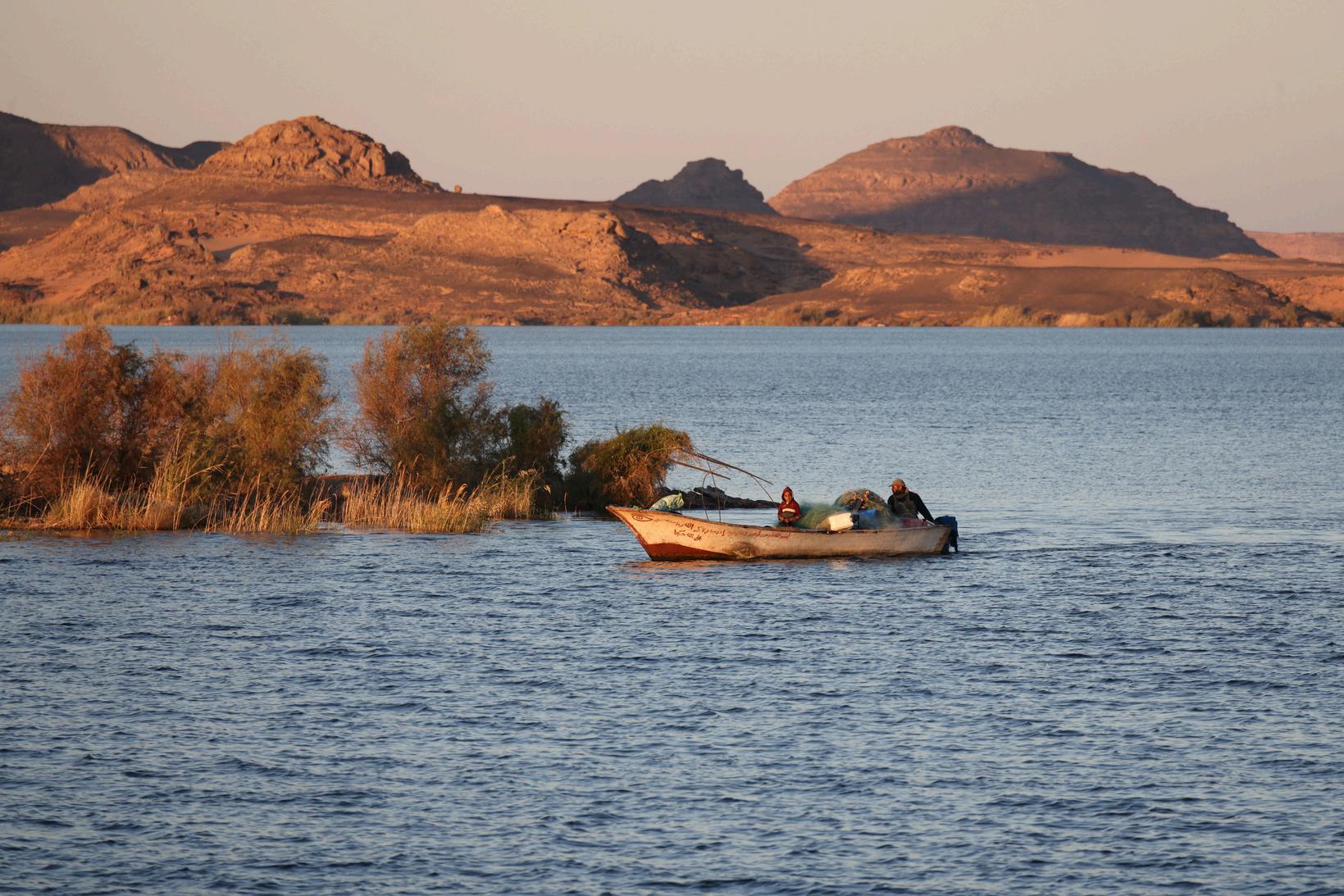

I’m still nestled comfortably in my cabin bed, wrapped in soft blankets and gently rocked by the anchored boat. Then the engine roars to life—a noisy start that soon settles into a friendly hum, sending little bubbles of happiness rising in my stomach. I know that soon, the lines will be cast off, and we’ll set out on a new day, heading toward new destinations and the horizon.
With excitement, I leap out of bed, delighting in the luxury of my bathroom with its hot shower, and head up to the deck. Without much thought, I simply absorb the light, the blue sky, the sun, the wind—and the lovingly prepared breakfast table waiting for me.
Here, the Nubian crew plays a vital role, breathing life into the boat. Discreet yet always attentive, they ensure nothing is lacking—food, drinks, advice, assistance, or organization. I am sometimes alone but never lonely.
The day unfolds, shaped by the program: visits to temples, walks, swimming breaks, or long journeys across the lake, where the shoreline is
only a distant ribbon and we gently chug along through the waves
Indeed, one might perceive even the smallest details differently and more intensely on such journeys For instance, all the travelers often watch with a certain sense of anticipation as the captain carefully steers the boat toward the shore, searching for the right landing spot How the boat then crunches onto the shore, and a few crew members jump onto land to find the perfect spot to secure it. Each time is new, each time is different Then, the white landing bridge is unfolded, and one cautiously steps into the next adventure, always supported by helping hands, so even our participant over 80 years old can join in
And when you retrace your steps in the opposite direction, returning from the excursion, I’m not the only one who feels like it’s “coming home ”
:
L
Definitely I could also sit for hours on the sun deck, drifting across the lake with my dreams. The little bubbles of joy are very active, and I eagerly anticipate every new moment. The friendly crew members also keep my body nourished with special drinks, snacks, and more.
Depending on the wind and waves, the passing landscapes sometimes reflect crystal clear in the water, leaving impressions on my soul that continue to glow long after.
A sense of timelessness settles in—a harmony with myself, the world, and the feeling of being completely content.

And now it’s Tea Time again, with freshly baked cake, and perhaps some guests will browse through the bookshelf and games shelf to spend a bit of time on board with those as well
As the day winds down, dinner concludes (once again, I ate so much, but it just tasted too good ) and the sky dons its starry attire, a deep stillness envelops me The engine is silent, and all I hear is the gentle lapping of the water, the sleepy chirp of a bird, or the call of a nocturnal creature somewhere out there A laugh from the crew’s quarters reassures me that I’m not entirely alone and that all is well with the world

I gaze at the stars, feeling both small in this vast universe and yet sheltered, protected, and exactly where I’m meant to be
Eventually, I crawl back into my cabin and let the waves rock me to sleep
I have a boat in Africa It is my friend and partner, and now I must not only love it but also keep it busy, ensuring it doesn’t grow bored or gather dust. So, I will be a businesswoman and, hopefully, guide us both to a success story
I don’t know which doors I’ll need to walk through next to bridge the gap between dreams and reality. But I’m certain that the “Dabuka Blue” is a magical place—and visitors can feel that too. Let me know if you’d like to give it a try!



We would like to introduce to you “The Eastern Desert” of Egypt
Part II: Gebel Elba National Park
Gebel Elba is a towering mountain that rises to about 1,435 meters above sea level in the Hala’ib Triangle, close to Egypt’s border with Sudan Its name, “Mountain of Clouds,” comes from its ability to trap moisture from passing clouds, creating a rare and lush ecosystem

that thrives in an other wise arid desert region
This phenomenon allows Gebel Elba to support a “mist oasis”—an ecosystem resembling that of the Mediterranean and East Africa
While most of Egypt is known for dry, barren deserts, the slopes of Gebel Elba are green, teeming with plants, trees, and wildlife rarely seen elsewhere in the country
Gebel Elba National Park
Established in 1986, Gebel Elba
National Park spans more than 35,600 square kilometers, making it one of Egypt’s largest protected areas The park encompasses not just the mountain itself but vast stretches of coastal plains, desert plateaus, and the Red Sea coastline, forming a mosaic of diverse habitats
Ecological Diversity
Thanks to the cloud-trapping
nature of Gebel Elba, the park supports exceptional biodiversity:
Flora: Over 450 plant species thrive here, including acacia trees, wild figs, and medicinal plants like aloe vera Some of these plants are endemic, found nowhere else in Egypt.
Fauna: The park is home to species like the Nubian ibex, Barbary sheep, gazelles, and the elusive African wildcat It also hosts reptiles, butterflies, and insects adapted to the region’s microclimates
Birds: Gebel Elba is a birdwatcher’s paradise Rare birds such as the Lappet-faced vulture, Verreaux's eagle, and the colorful Arabian sunbird can be spotted here.
ancient roots in the region The Beja’s traditional ways of life, including camel herding, weaving, and storytelling, are closely tied to the land Visitors can learn about their customs, language, and crafts, offering a rare cultural immersion
in
Elba National Park Hiking and Exploration: Explore the lush mountain slopes, hidden wadis, and desert plains
Wildlife Watching: Spot rare birds, gazelles, and reptiles unique to this ecosystem
Cultural Experiences: Engage with the local Beja communities and learn about their traditions
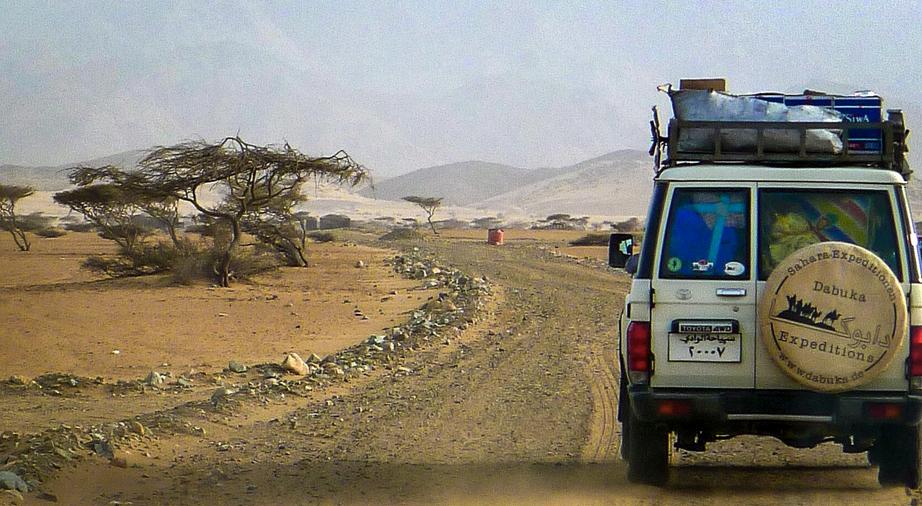
The coastal areas are equally rich, featuring mangrove forests, coral reefs, and marine species like sea turtles and dolphins
Gebel Elba National Park is not just a haven for nature—it is also home to the Beja people, a seminomadic indigenous group with
Red Sea Exploration: Visit the coastal areas for mangrove walks, birdwatching, or diving in pristine coral reefs
Gebel Elba and its national park are unlike any other place in Egypt It’s a paradise for adventurers, naturalists, and those seeking quiet, untouched beauty This is a land where mountains meet clouds, wildlife thrives in mist-covered
slopes, and traditions are preserved in the vastness of the desert
Gebel Elba National Park is not just a destination—it’s an experience of Egypt’s hidden natural wonders and cultural treasures
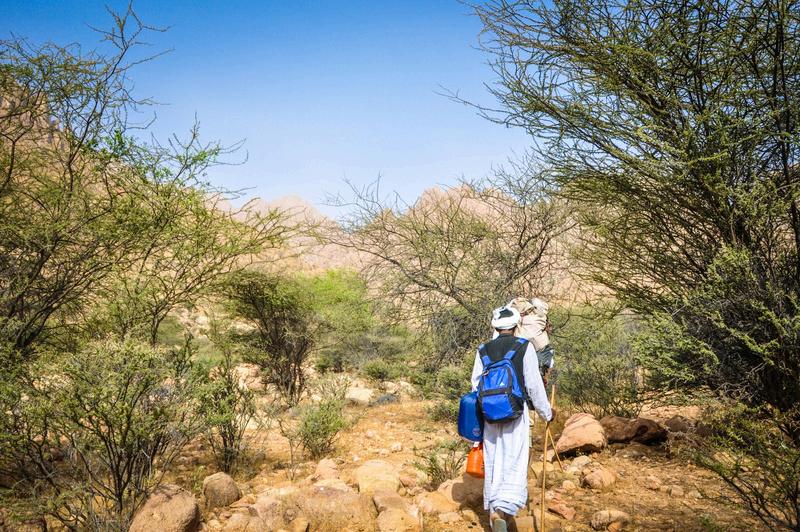
The Eastern Desert is rich in archaeological sites, including ancient Roman and Egyptian ruins It historically served as a crucial trade route linking the Nile Valley with the Red Sea, facilitating commerce and cultural exchange
In recent years, the Eastern Desert has seen growth through mining and tourism Popular tourist destinations like Hurghada and Marsa Alam offer access to the stunning Red Sea and various desert excursions

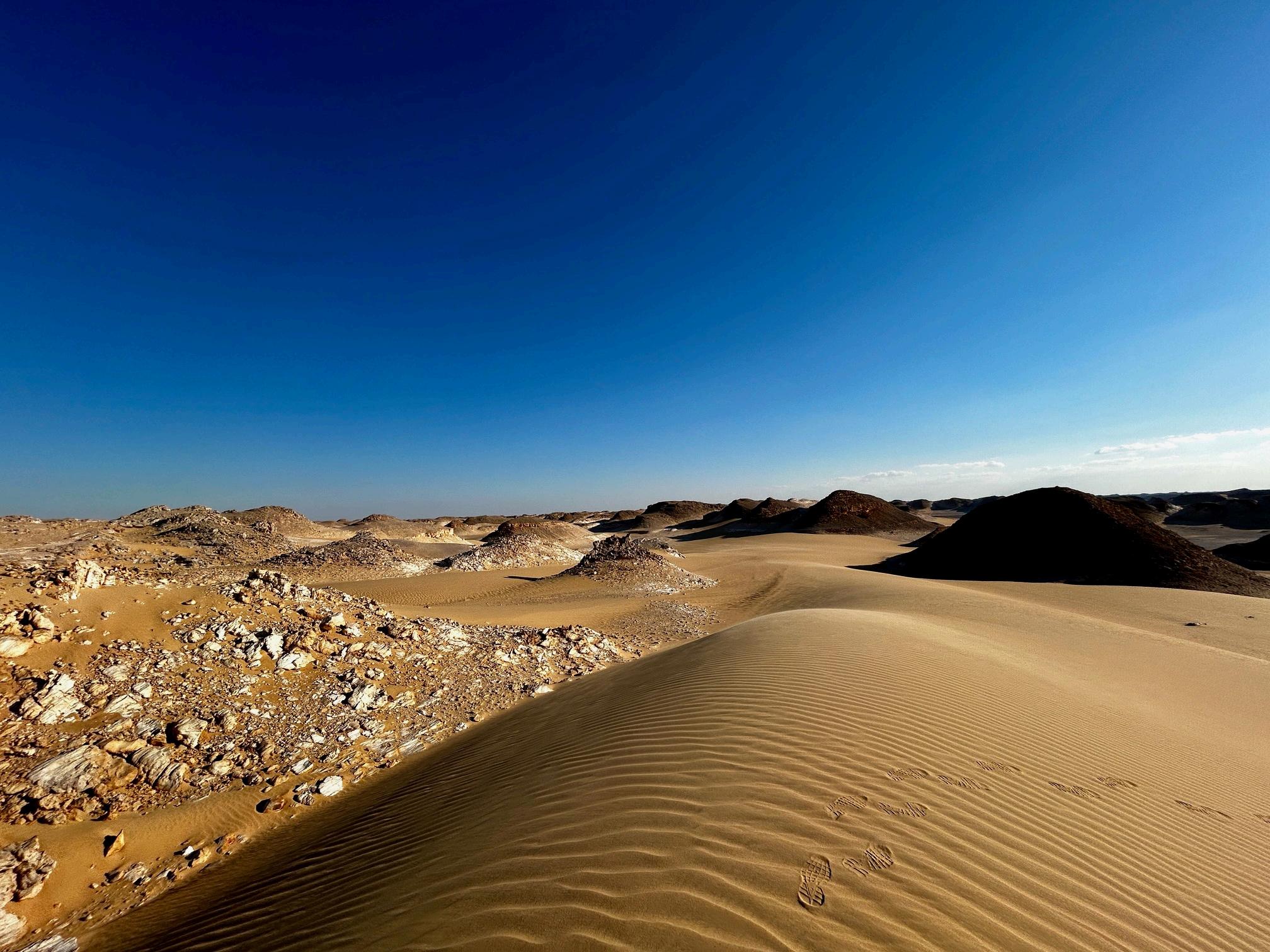


Contact: +20 109 3371 546
Email: service@dabuka de www.dabuka.com
Hassan Fathy (1900–1989), often referred to as “The Architect of the People,” was a pioneering Egyptian architect, philosopher, and humanist He dedicated his career to designing sustainable and affordable housing for Egypt’s rural poor, blending traditional techniques with innovative ideas His legacy transcends architecture, standing as a testament to the power of art and design in fostering community and dignity
Born in Alexandria to a middle-class family, Fathy grew up immersed in a world of culture and intellectualism
He studied architecture at the prestigious Royal School of Fine Arts in Cairo, graduating in 1926 Early in his career, he became disillusioned with Western architectural styles, which were illsuited to Egypt’s climate and cultural identity Instead, he sought
inspiration in the country’s rich architectural heritage, from the monumental pyramids to the vernacular mudbrick villages of Upper Egypt
Fathy believed that architecture should harmonize with the environment, serve the people, and reflect their traditions This philosophy became the cornerstone of his life’s work
One of Fathy’s most celebrated projects was the village of New Gourna, near Luxor, in the 1940s
The Egyptian government commissioned him to relocate a community of tomb robbers living on archaeological sites Fathy saw this as an opportunity to create a model village that combined functionality, beauty, and sustainability
Using traditional mudbrick construction techniques, he


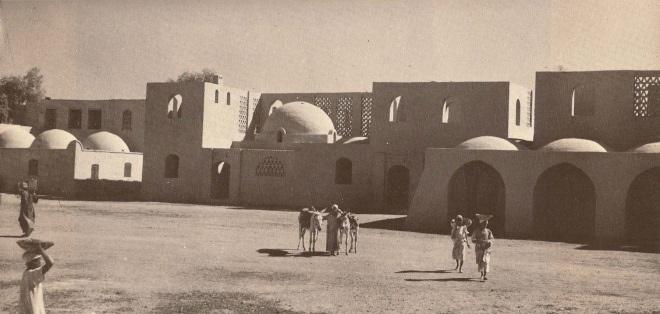
designed houses, mosques, schools, and a market. The vaulted roofs provided insulation against the scorching heat, while the layout encouraged social interaction. Fathy worked closely with the villagers, teaching them how to construct their own homes and involving them in every step of the process.
Though bureaucratic challenges prevented New Gourna’s full realization, the project became an enduring symbol of participatory design and ecological architecture.
Fathy passionately advocated for the use of local materials and traditional craftsmanship. He opposed the widespread adoption of concrete and steel, which he saw as alien to Egypt’s landscape and costly for its impoverished citizens. His mudbrick structures, built with natural materials, were not only environmentally friendly but also deeply rooted in the region’s history and culture.
Fathy believed in empowering communities. By teaching villagers to

build their homes, he restored a sense of pride and ownership His book, “Architecture for the Poor” (1973), outlines his philosophy and remains a seminal work in the fields of sustainable and community-based design
Despite his groundbreaking ideas, Fathy faced resistance from both governments and modernist architects His methods were often seen as outdated or impractical in the face of rapid urbanization However, his work gained international acclaim, earning him numerous awards, including the Aga Khan Award for Architecture and the Right Livelihood Award, sometimes called the “Alternative Nobel Prize ”
Today, Fathy’s ideas are celebrated worldwide for their foresight in addressing contemporary challenges like climate change, sustainable development, and cultural preservation
Legacy
Hassan Fathy’s influence extends far beyond the villages of Egypt His work has inspired architects, planners, and activists globally to rethink the relationship between people, culture, and the built environment His philosophy of “architecture for the people” is a call to action for a more inclusive and sustainable future
As modern cities grapple with overpopulation, energy crises, and environmental degradation, Fathy’s vision of simple, community-driven, and ecologically harmonious architecture is more relevant than ever
Hassan Fathy didn’t just design buildings; he designed hope His legacy reminds us that architecture can be a tool for social change, a bridge between the past and the future, and a celebration of humanity’s enduring creativity
“The future is always beginning now. ” Mark Strand


https://dabuka com/ itinerary/socotra-islandunesco-world-heritageparadise/
Dates: 23-31 March 25
Duration: 9 days
Price: 2760 $
Embark on a journey to Discover Socotra, a UNESCO World Heritage Paradise
https://dabuka.com/itinerary/ sand-burial-treatment-aholistic-healing-experiencein-siwa-oasis/
A Healthy Mind In A Healthy Body

Dates: 17-21 July 25
Duration: 5 days
Price: 977 $
https://dabuka com/ itinerary/sand-dunes-egypta-journey-into-the-infinite/
Dates: 2-9 April 25
Duration: 8 days Price: 845 $
Sand under your feet and adventure without regret in your luggage

https://dabuka com/ itinerary/aswan-to-abusimbel-tour/
Dates: 14-18 April 25
Duration: 5 days
Price: 1250 $
We may have all come on different ships, but we’re in the same boat now
Tell us about your most beautiful, exciting, or craziest travel adventure! Let us hear from you – we look forward to your stories! magazine@dabuka de


The journey into the Western Desert has begun, and I’m enjoying my first glimpse of the vast expanse
Especially in the evening, as the sun slowly sets on the horizon and you can almost hear the silence, the atmosphere is so peaceful that it’s hard to imagine any problems existing anywhere in the world
“All you have to do is contemplate a simple grain of sand, and you will see in it all the marvels of creation.”
- Paulo Coelho
“The desert tells a different story every time one ventures on it.”
- Robert Edison Fulton JR




We’ve arrived at a special highlight of the tour – the Djara Cave. Upon entering, you’re greeted by consistently cool air, no matter the season, and it takes a moment to orient yourself in the dim light. But then, little by little, the bizarre stalactites and stalagmites come into view, stretching through the cave like dream catchers turned to stone.
In the evening, our jeep is parked amidst the sand dunes at sunset, and it feels absolutely wonderful to be here, alone in the vastness, with our mobile home.



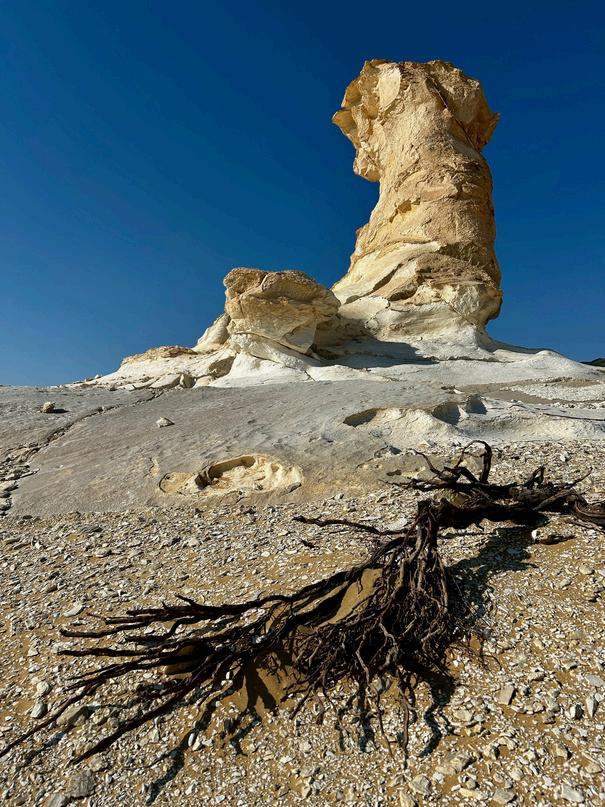
The White Desert – another natural wonder, always different, always new Imagination runs wild, and a pair of shoes in the sand shows that the best way to explore the desert is barefoot Light and shadow also play a crucial role here, making the sky and earth appear in a new light time and again
“The desert, when the sun comes up I couldn't tell where heaven stopped and the Earth began “
- Tom Hanks
Contact: : +20 101 506 9061
Email: service@dabuka de www dabuka com




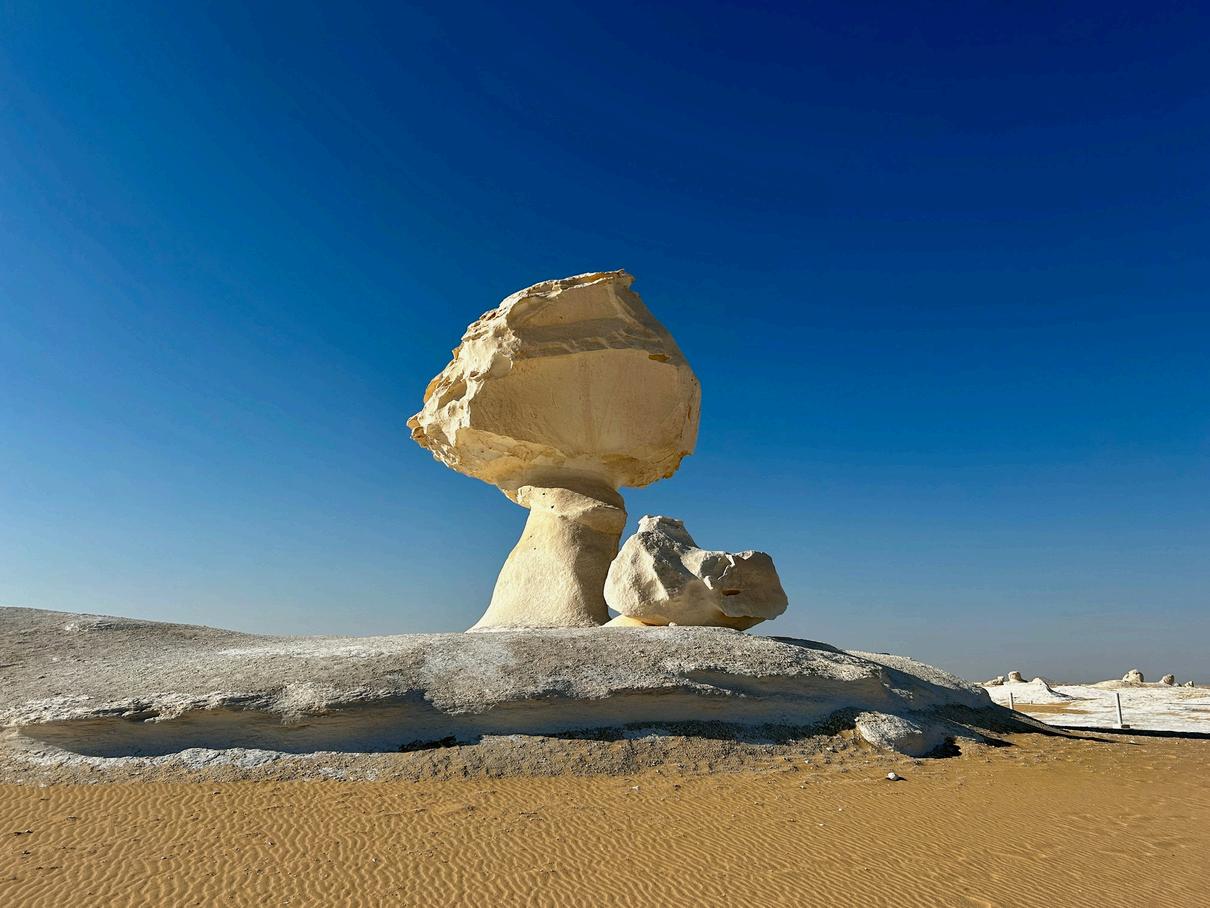








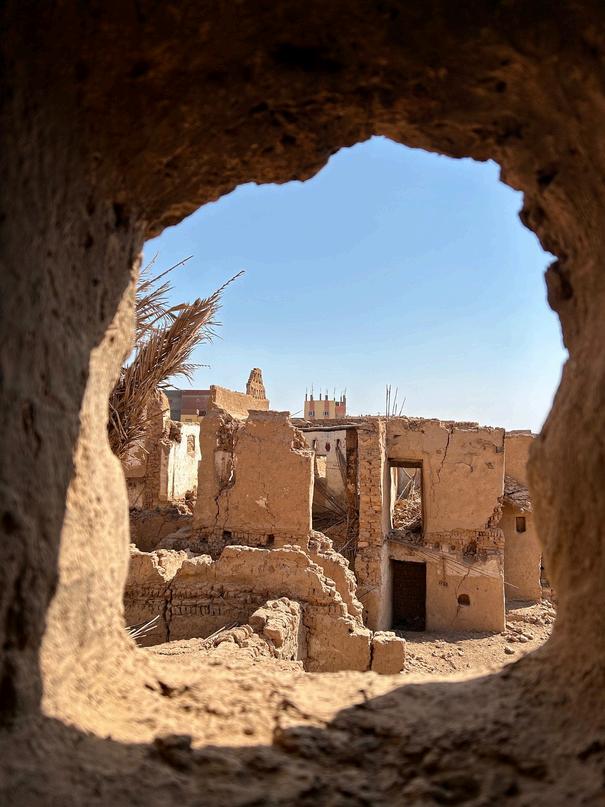
Dakhla – in my eyes, the most beautiful of the oases in the Western Desert The unique mudbrick architecture of its houses invites further exploration, while the juicy dates tempt you to indulge. Diligent hands ensure that nature’s gifts grow abundantly.

Contact: : +20 101 506 9061
Ask us – we are happy to advise you.
Team Dabuka Travel Visions
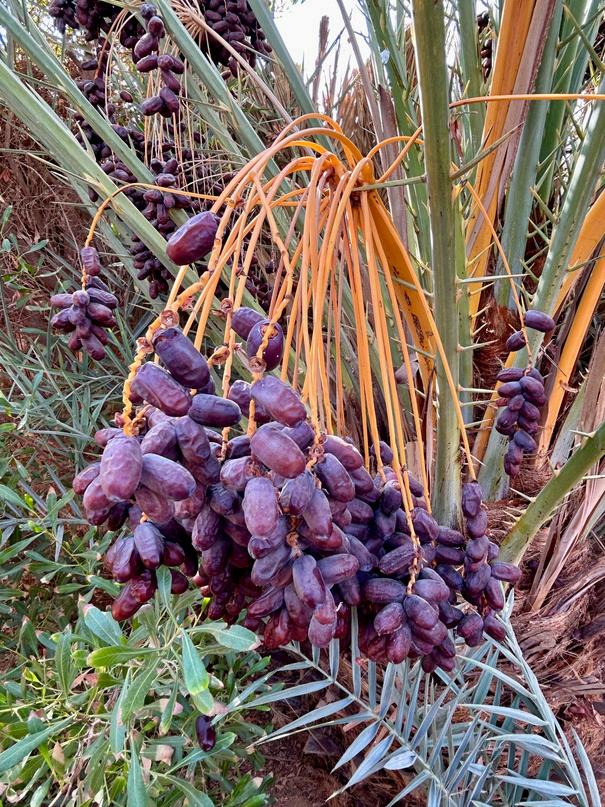




reminder of deities from ancient times, whose influence can still be felt today.
A farmer greets us kindly as he rides through the plantation on his donkey – the contentment he radiates is remarkable The Hibis Temple in Kharga serves as a Contact: : +20 101 506



Sadly, the journey comes to an end today as we reach the outskirts of the desert near Hurghada. Relatively massive, dark mountains mark the way For refreshment, we find a fruit stand whose proud owner is happy to be photographed but even happier to sell his colorful
selection. It will be hard to return to enclosed spaces, to nights without stars visible from the room, and to not walking barefoot through the sand. Though the sand will likely linger in our luggage for a while, we’ve already decided – we’ll be back!



Contact: : +20 101 506 9061
Email: service@dabuka de www.dabuka.com


Discover the fascinating world of Egypt in a unique blend of history, culture, and relaxed luxury.
This 9-day journey takes you from the bustling metropolis of Cairo to the aweinspiring temples of Abu Simbel and the hidden treasures of Nubia along Lake Nasser.
Experience the magic of Lake Nasser aboard the exclusive safari boat “Dabuka Blue,” enjoy breathtaking sunsets, and explore world-renowned landmarks such as the Philae Temple, the Nubian Museum, and the Grand Egyptian Museum.
Highlights of this journey:
Scenic flight over Cairo and visit to the Grand Egyptian Museum
Private tours of the temples of Abu Simbel, Amada, Wadi Sebua, and Kalabsha
Exclusive cruise on Lake Nasser aboard the luxurious safari boat “Dabuka Blue ”
Visit to the legendary Old Cataract Hotel and Sharia Moez in Cairo
Overnight stays in charming boutique hotels and luxury resorts Immerse yourself in a journey full of history, relaxation, and unforgettable experiences
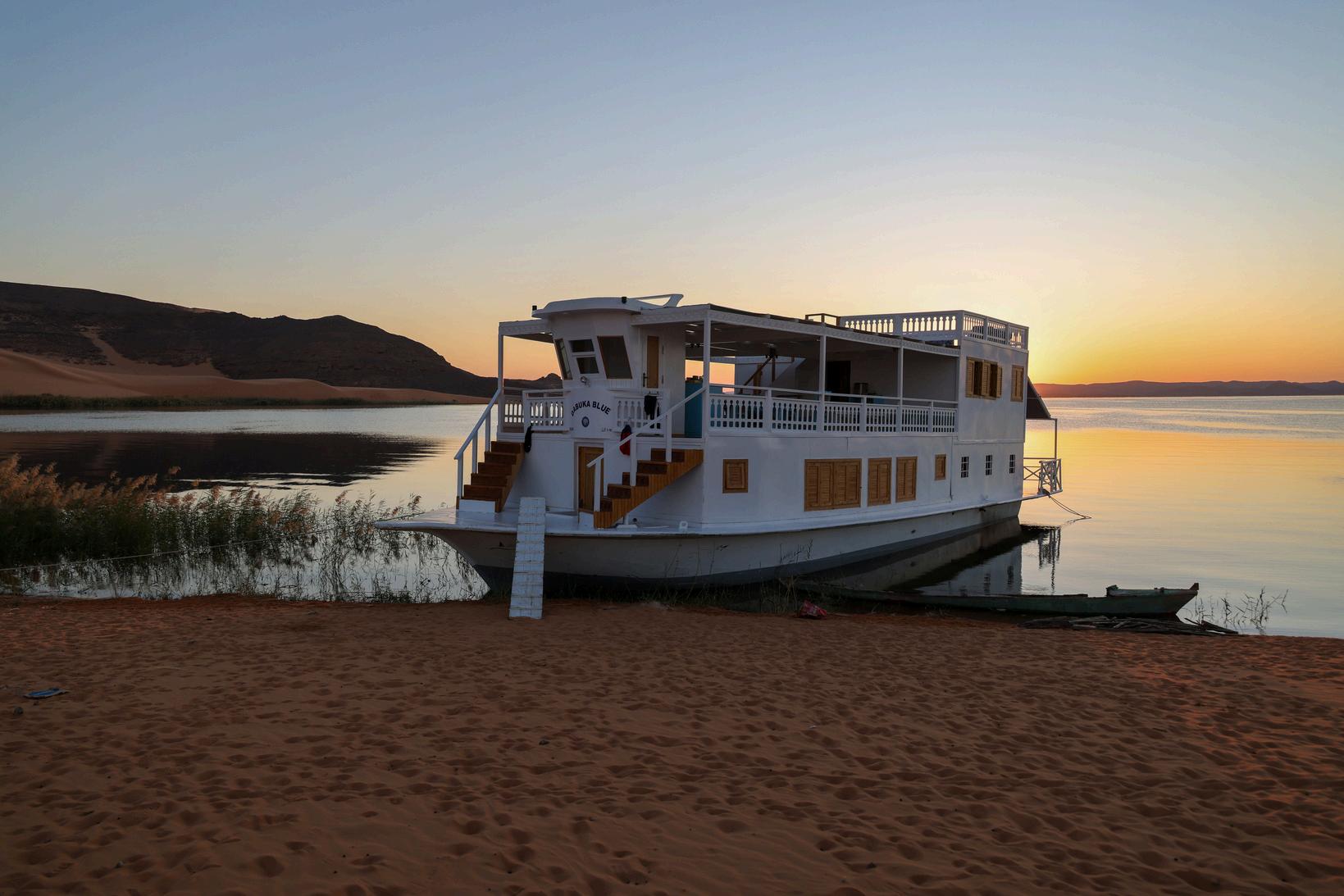


Embark on an unforgettable journey through the heart of Tanzania’s stunning wilderness with our special boat safari experience on the majestic Rufiji River This iconic waterway, located in the renowned Selous Game Reserve (now part of the Nyerere National Park), is a lifeline for the region’s diverse ecosystems and teeming wildlife
Our state-of-the-art, low-emission boat combines modern comfort with eco-conscious technology Equipped with a powerful yet quiet fuel engine and cutting-edge solar panels, it ensures a serene and sustainable safari Glide silently along the river, getting closer than ever to the breathtaking wildlife while preserving the natural beauty of this pristine environment
A dazzling variety of birdlife, from majestic fish eagles to colorful kingfishers. Elephants, giraffes, and other majestic animals that come to the river to drink and bathe.

Comfort and Safety: Enjoy a smooth ride on our stable boat, with plenty of space to relax and take in the views

Unparalleled Wildlife Encounters: Whether it’s a pod of hippos or a herd of elephants, every moment on the Rufiji is a chance to connect with nature
The Rufiji River, Tanzania’s largest, is a haven for biodiversity Its meandering waters are home to an array of fascinating species, including:
Hippos and Nile crocodile often seen basking along the riverbanks.
This river is also a vital part of local communities, providing water, fishing opportunities, and fertile lands for agriculture Its delta, where the river meets the Indian Ocean, is a unique wetland habitat and a UNESCO-listed site of ecological importance
Expert Guides: Our knowledgeable guides will share fascinating insights about the region’s flora, fauna, and cultural significance
Tanzania is famous for its iconic landmarks like Mount Kilimanjaro and the Serengeti, but the Rufiji River offers a more intimate and serene way to experience the country’s natural wonders From its origins in the southern highlands to its delta near the Indian Ocean, the Rufiji is a treasure waiting to be explored.
Don’t miss this once-in-a-lifetime opportunity to explore the wonders of the Rufiji River in style and sustainability Whether you’re a wildlife enthusiast, a nature lover, or simply seeking a unique travel
experience, our boat safari promises memories to last a lifetime

Pack your bags and get ready for an adventure that feels like stepping into a blockbuster movie! This 3-night, 4-day journey through Jordan promises ancient wonders, jaw-dropping desert landscapes, and a spa day in the world's most unique "saltwater bathtub "
Day 1: Arrival in Jordan – Petra Exploration
Begin your journey with a drive from Aman directly to Petra, the ancient Nabatean city Enter through the breathtaking Siq, a narrow canyon that leads to the iconic Treasury. Explore the wonders of Petra at your own pace, venturing beyond the Treasury to
discover the Royal Tombs, Roman ruins, and, for the adventurous, hiking to the Monastery for stunning views
Overnight stay in Petra
Day 2: Wadi Rum Adventures
Depart Petra and head to Wadi Rum, a UNESCO World Heritage Site known as the "Valley of the Moon " Switch to an off-road vehicle and explore the desert’s stunning landscapes, unique rock formations,and ancient inscriptions Spend the night in a Bedouin camp, savoring a traditional Zarb dinner and enjoying the magical experience of stargazing in the desert.

Day 3: Dead Sea Visit & Return to Amman

Leave Wadi Rum and journey to the Dead Sea Relax and float in its salty waters, renowned for their therapeutic properties, and rejuvenate with its famous mud Afterward, return to Amman to conclude your adventure Overnight hotel Aman
Day 4: Departure back home
Option: If you have less time, skip the Dead Sea and fly home directly
Petra, a UNESCO World Heritage Site and one of the New 7 Wonders of the World, is a must-see destination. This ancient city was the capital of the Nabataeans from 300 BC to 100 AD After centuries of abandonment, it was rediscovered in 1812 and has since captivated travelers worldwide

Price: 520,00 $/pp
Duration: 4 Days:
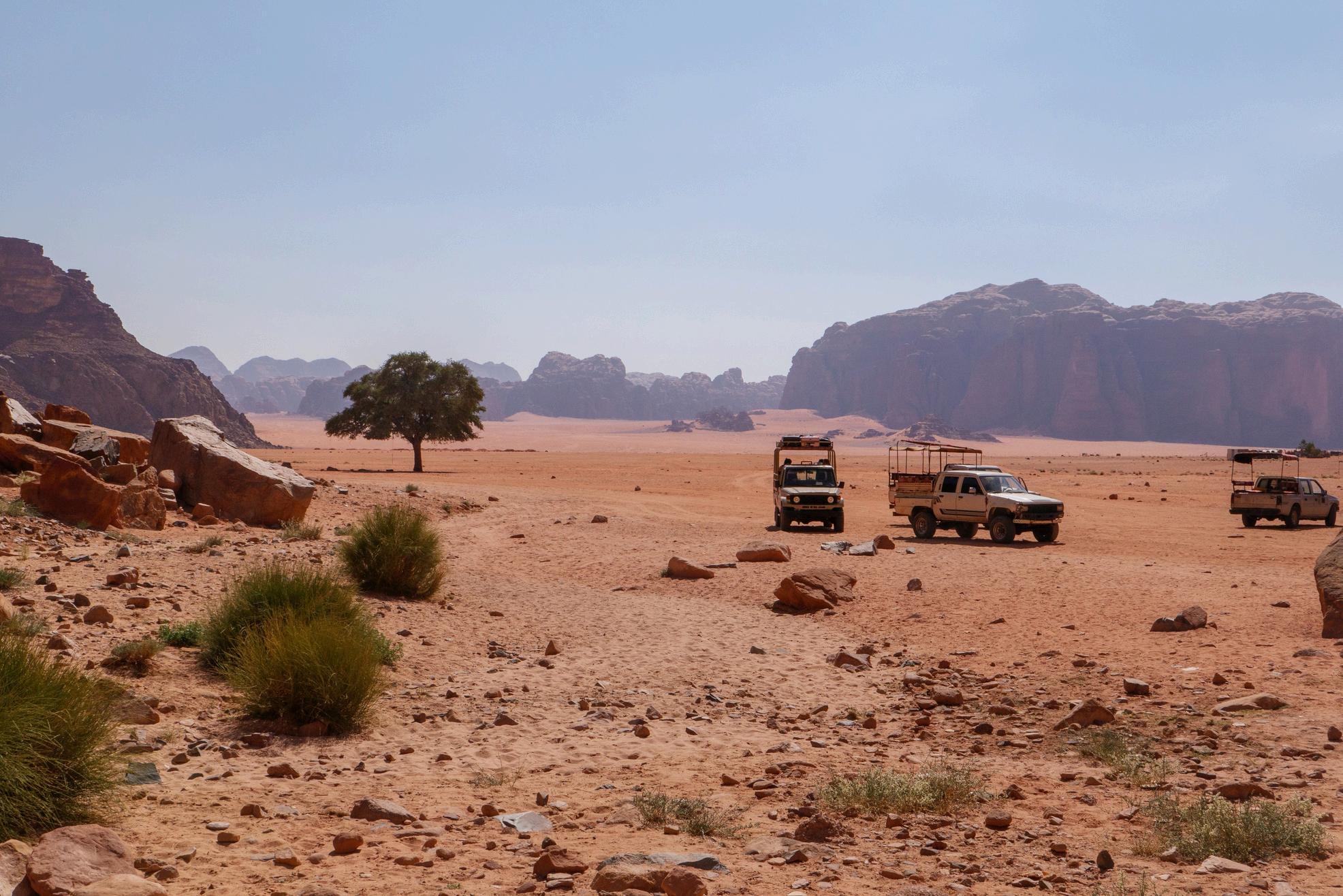
Contact: : +20 101 506 9061
Email: service@dabuka de www dabuka com
The Siq: A dramatic canyon leading to the Treasury
The Treasury: Petra’s iconic façade, featured in films like Indiana Jones and the Last Crusade
The Monastery: A spectacular monument rivaling the Treasury in grandeur
Royal Tombs & Roman Ruins: Explore Petra’s rich history and architecture.
Camel & Donkey Rides: For a unique experience, ride through the ancient city
Wadi Rum: The Valley of the Moon
Wadi Rum, a UNESCO-protected desert spanning 740 km² , is famed for its Martian-like landscapes. Its cinematic beauty has made it a popular filming location, including for Indiana Jones and the Last Crusade
Desert Jeep Tours: Wadi Rum: The Valley of the Moon
Ancient Inscriptions: Discover thousand-year-old petroglyphs and Nabatean carvings
Bedouin Camp: Experience authentic Bedouin culture, complete with traditional meals and hospitality Stargazing: Spend the night in a glamping-style desert camp under a sky full of stars
Distance between Petra and and Wadi Rum:
Approximately 68 miles(110km), a 2-hour drive through scenic desert landscapes
Best Time to Visit: Spring and autumn offer pleasant weather for exploring
Cultural Insights: Engage with Bedouin guides and learn about their heritage and way of life



Just like a caravan of camels walking in the desert, be durable against the adversities of life and walk with decisive steps
Mehmet Murat Ildan
Welcome to the White Desert, a place so otherworldly it feels like you’ve stepped onto another planet (don’t worry, the camels know the way back to Earth)
eye
Did you know?
1 What makes a camel tour special compared to others? They offer a unique way to explore deserts and remote areas, providing an authentic experience of traditional travel
2 How do camel tours impact local culture and economy? They support local communities by creating jobs and promoting cultural exchange.
3 What makes camel tours in Egypt unique?
Egypt offers the chance to explore iconic sites, like the White Desert
Imagine this: you’re gently swaying atop a camel, the golden sun casting dramatic shadows over surreal chalk-white rock formations

Our camel caravan takes you on a journey through a landscape where nature’s imagination runs wild From mushroom-shaped rocks to formations resembling animals, you’ll find yourself guessing, “Is that a chicken or a spaceship?” And let’s not forget the camels themselves—our desert chauffeurs, each with a personality as unique as the desert’s sculptures Don’t be surprised if your camel sneaks a snack or gives you a sassy side-
As the day winds down, the real magic begins Watch the sun dip below the horizon, painting the desert in shades of fiery orange and soft pink Then, under a sky bursting with stars, you’ll enjoy a traditional Bedouin dinner by the campfire Stories, laughter, and maybe even a little camel gossip—it’s a night to remember
Whether you’re a seasoned adventurer or a first-time desert explorer, a camel tour in the White Desert is your ticket to a world of wonder, humor, and awe So grab your sense of adventure (and a comfy seat cushion), and join us for a ride you’ll never forget!

5-Day Camel Tour in the White Desert
Contact: : +20 101 506 9061
Email: service@dabuka de www dabuka com

Your adventure begins with a journey from Cairo to the lush Bahariya Oasis, a green haven in the heart of the desert Explore the oasis and enjoy a delicious lunch before continuing to Farafra, where you’ll settle into a cozy hotel for the night
After breakfast, we’ll head to Gebel el Ganna, where your camel caravan awaits The journey north begins, with a lunch break amidst the serene desert scenery By evening, you’ll find yourself in the captivating White Desert, where
you’ll enjoy supper under the stars and camp for the night
Rise with the desert sun and continue deeper into the White Desert Marvel at the surreal chalk formations as we travel, stopping for lunch along the way By nightfall, we’ll reach the core of this otherworldly landscape, setting up camp for dinner and another magical night under the stars
Today’s journey takes us to the
enchanting Magic Spring, a hidden oasis in the desert, where we’ll pause for lunch. From there, we head west, crossing parts of the White Desert to find a perfect spot or dinner and camping
After breakfast, we’ll journey toward the Oasis Road, where transportation will be waiting to take us back to Cairo Reflect on the incredible landscapes and unforgettable experiences as you return to the bustling city.
Note: If camping in the desert isn’t permitted, we’ll return to the hotel in Farafra each night, ensuring your comfort while still delivering an exceptional desert experience



In the beginning, when the world was new and the animals were just beginning to work for men, there was a camel, and he lived in the middle of a howling desert because he did not want to work He ate sticks and thorns and prickles, and when anybody spoke to him he said “Humph!” Just “Humph!” and no more
Presently the Horse came to him on Monday morning, with a saddle on his back and said, “Camel, O Camel, come out and trot like the rest of us ” “Humph!” said the

Camel, and the Horse went away and told the Man
Presently the Dog came to him, with a stick in his mouth, and said: “Camel, O Camel, come and fetch and carry like the rest of us ” “Humph!” said the Camel,and the Dog went away and told the Man
Presently the Ox came to him, with the yoke on his neck, and said, “Camel, O Camel, come and plough like the rest of us ” “Humph!” said the Camel, and the Ox went away and told the Man
At the end of the day the Man called the Horse and the Dog and the Ox together, and said, “Three, O Three, I’m very sorry for you; but that Humphthing in the Desert can’t work, or he would have been here by now, so I am going to leave him alone, and you must work double-time to make up for it ”
That made the Three very angry, and they held a panchayat on the edge of the Desert; and the Camel came chewing cud and laughed at them Then he said “Humph!” and went away again
Presently there came along the Djinn who was in charge of All Deserts, rolling in a cloud of dust “Djinn of All Deserts,” said the Horse, “is it right for anyone to be idle?” “Certainly not,” said the Djinn “Well,” said the Horse, “there’s a thing in the middle of your Desert with a long neck and long legs, and he hasn’t done a stroke of work since Monday morning He won’t trot ” “Whew!” said the Djinn whistling, “that’s my Camel What does he say about it?” “He says ‘Humph!’ , and he won’t plough,” said the Ox “Very good,” said the Djinn “I’ll humph
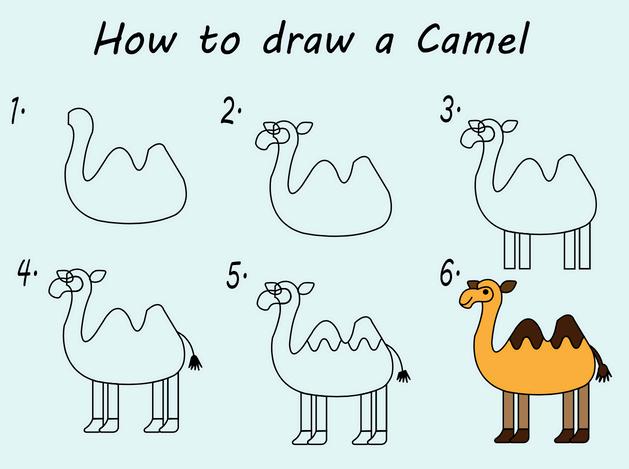

him if you will kindly wait a minute ”
The Djinn rolled himself up in his dust-cloak, and took a walk across the Desert, and found the Camel looking at his own reflection in a pool of water “My friend,” said the Djinn, “what’s this I hear of your doing no work?” The Djinn sat down, with his chin in his hand,
while the Camel looked at his own reflection in the pool of water “You’ve given the Three extra work ever since Monday morning, all on account of your idleness,” said the Djinn. And he went on thinking with his chin in his hand
“Humph!” said the Camel “I shouldn’t say that again if I were you, ” said the Djinn; “ you might Contact: : +20
Email: service@dabuka de www dabuka com
say it once too often. I want you to work ” And the Camel said “Humph!” again; but no sooner had he said it than he saw his back, that he was so proud of, puffing up and puffing up into a great big hump
“Do you see that?” said the Djinn ‘‘That’s your very own humph that you’ve brought upon your very own self by not working Today is Thursday, and you’ve done no work since Monday, when the work began Now you are going to work ” “How can I,” said the Camel,“with this humph on my back?” ‘‘That has a purpose, ” said the Djinn, “all because you missed those three days You will be able to work now for three days without eating, because you can live on your humph; and don’t you ever say I never did anything for you. Come out of the Desert and go to the Three, and behave ”
And the Camel went away to join the Three And from that day to this the Camel always wears a humph (we call it ‘hump’ now, not to hurt his feelings); but he has never yet caught up with the three days that he missed at the beginning of the world, and he has never yet learned how to behave


Dorothee: We’re so glad you’re taking the time to speak with us today – especially since you’re our first female interviewee
You’ve known Tarek since your school days: Do you remember how you first met?
Mervet: It feels like I’ve known Tarek “forever” – probably since the second grade, so we met first in school And what’s especially nice is that we share the same interests – the desert and nature – and that we work in the same field
Dorothee: You manage two business areas – diving in Dahab and Sosal House in Dakhla How did that come about? They’re very different fields –which one fulfills you more?
Mervet: It’s not always easy to balance both businesses, especially since they’re physically so far apart But because both are connected to nature, they’re both close to my heart Ultimately, though, my “main passion” is the desert. I’ve been working there since 2005, while the diving business only started in 2019.
Dorothee: I can understand that Please tell us more about the women’s project you started in Dakhla
Mervet: The women’s project is called the Sosal Art Center, and it started in 2010 The women create special handicrafts and market them The project specifically benefits women from Dakhla For a while, we even exported products Currently, we also offer training workshops for women and girls in the oasis
Dorothee: That sounds really interesting But life isn’t all about work What else is important to you besides work?
Mervet: My children, friends, and always, desert safaris
Dorothee: Life isn’t always easy What strategies do you use to get through tough times?
Mervet Honestly, I don’t have a strategy – I just go through it In the end, everything passes And good times always come around again So, I use the bad times to prepare for the good ones
Dorothee: That’s definitely a good approach Now, a completely different question: What does friendship mean to you?
Mervet: Friendship is everything –even with children, partners, etc Friendship means sharing companionship Love alone isn’t enough
Dorothee: On the topic of “women in business” – what comes to mind?

Mervet: I’ve never really focused on whether someone is a woman or a man Maybe women have it harder, especially in Egypt But I personally just learn to deal with situations I don’t feel particularly limited in Egypt, except for not being able to go into the desert alone Other than that, I don’t think about it
Egypt is a tough country to work in for everyone, but that’s what makes it fun It’s a challenge, and you meet so many wonderful people
Dorothee: And finally: If you had three wishes, what would they be?
Mervet: Health, even in old age, and the ability to go on desert safaris until the end


I want my children to do well, to navigate life successfully, and grow through it
To protect wildlife and nature –especially in tourism
Dorothee: Thank you so much for these fascinating insights into your life We look forward to continuing our collaboration!



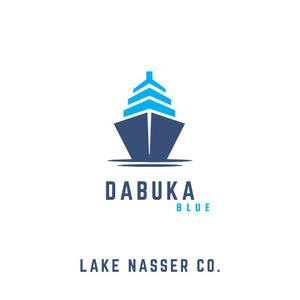
We are often asked about the meaning of our name.
“Dabuka” represents a moving camel caravan. At first glance, it naturally aligns with the theme of the desert, but over time, it has come to reflect our diverse offerings with the underlying message: forward movement, no stagnation, always progressing.
Establishing oneself in today’s tourism industry is becoming an increasingly


significant challenge. Political unrest, inflation, and intense competition are making life particularly difficult for smaller travel companies.
However, we see these challenges as opportunities. We stand for tourism beyond the masses, for individual solutions, niche products, and personal consultation. The human factor is at the forefront of our caravan, and in times like these, we believe this is more important than ever.
Less is more – quality over quantity –preserving traditions while remaining open to progress: this is how we tackle current challenges.
Feel free to tell us what you would like to make the best time of the year a success. We are always eager to learn and improve.





Never ignore a person , who loves you, cares for you, and misses you, because one day, you might wake up and realize, you lost the moon while counting the stars .



Egyptian Air Force Museum – A Journey Through the Skies
Step into a world of aviation and discover Egypt’s soaring history at the Egyptian Air Force Museum
Located at Almaza Air Base in Cairo, this unique museum invites you to experience the powerful legacy of Egypt’s Air Force, from its humble beginnings in the 1930s to its modern achievements
Witness Aviation History Up Close Walk among legendary aircraft that once ruled the skies From the elegant Spitfire of World War II to the sleek MIG fighters of the Cold War and the mighty F-16 Falcons of today, the museum showcases a spectacular lineup of planes and helicopters Whether you’re an aviation enthusiast or simply curious, standing face-to-face with these machines is an unforgettable experience

Inside the museum, history comes alive Explore carefully curated exhibits featuring pilot gear, photographs, and artifacts that tell the personal stories of Egyptian pilots and their missions Highlights include immersive displays of key moments in Egyptian military aviation, like the 1956 Suez Crisis and the 1973 October War, where the bravery of the Air Force changed the course of history
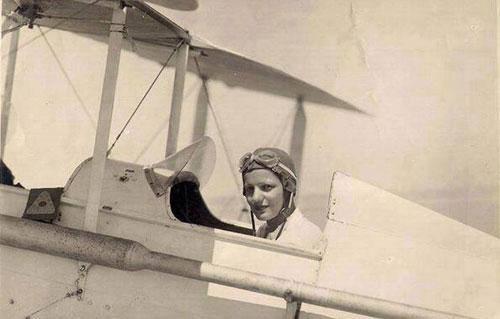

The Egyptian Air Force Museum is more than a collection of aircraft –it’s a family-friendly experience that captures the imagination of young and old alike Kids can marvel at the planes while adults appreciate the skill and courage that define Egypt’s aviation pioneers. It’s the perfect place to inspire a love for history, flight, and innovation
Located close to Cairo International Airport, the Egyptian Air Force Museum is easily accessible for visitors Spend an afternoon surrounded by stories of heroism and engineering brilliance, and let yourself be inspired by Egypt’s journey through the skies.
Editorial
Dabuka Travel Visions Issue 8
Editor: Dorothee Rieche
Art director: Tarek El Mahdy
Contributor: Shada Mamdouh
Marketing & Advertising : Mohamed Ibrahim
Contact: